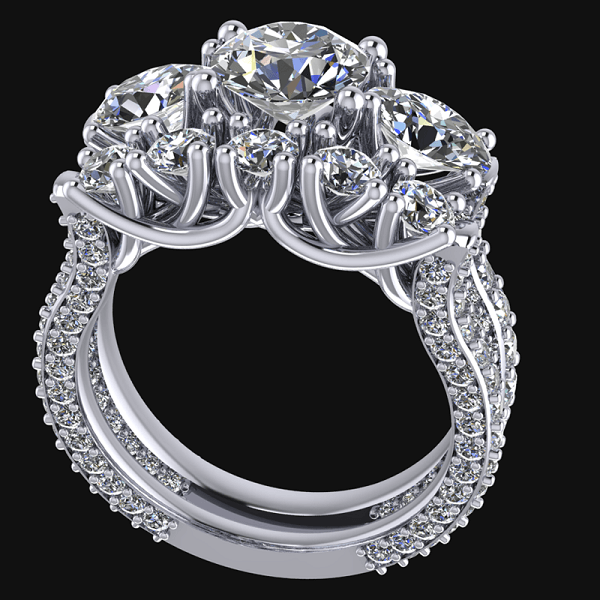Diamond Education Understanding the 4 C's
Diamond Education at BVW Jewelers in Reno
At BVW Jewelers, we believe that diamond education is key to making informed decisions about your diamond purchase. Understanding the 4 C's—Cut, Color, Clarity, and Carat Weight—not only allows you to select the diamond that shines brightly but also ensures you get the best value. Therefore, our Reno team is here to provide you with the expertise and guidance you need to make a confident choice.

Master the 4 C's of Diamond Education
The 4 C's form the foundation of diamond education, and they are essential for evaluating the quality of a diamond. In fact, at BVW Jewelers, we guide you through each of these important factors:
- Cut: The precision of a diamond's cut affects how well it reflects light and sparkles. Thus, a well-cut diamond can unlock its brilliance.
- Color: The less color a diamond has, the more valuable it is. As a result, you’ll learn how to choose the ideal color grade for your diamond.
- Clarity: A diamond’s clarity refers to the absence of imperfections. Similarly, we help you assess the clarity to ensure the stone’s perfection.
- Carat Weight: Carat weight measures the diamond’s size. Additionally, we help you determine the right carat weight based on your preferences and budget.
Moreover, our Reno experts will tailor their advice to your needs, ensuring that you fully understand how each of these factors affects the diamond’s beauty and value.
Personalized Guidance with Diamond Education
At BVW Jewelers, we understand that buying a diamond is a significant investment. Therefore, we provide personalized guidance through every step of the process. Whether you are selecting an engagement ring, a special gift, or a piece for yourself, our diamond education ensures you make the best choice for your unique needs.
Not only do we sell diamonds, but we also make sure you understand every aspect of your purchase. From explaining the 4 C's to guiding you through the selection of the perfect stone, our team is dedicated to ensuring you have all the information you need.
Extensive Selection and Expert Advice
Our extensive collection of diamonds at BVW Jewelers ensures that you’ll find the perfect piece. Whether you’re looking for a timeless engagement ring or something more unique, we offer something for everyone. Moreover, our dedication to diamond education and exceptional customer service has made us a trusted name in Reno's jewelry community. We pride ourselves on offering a personalized experience that leaves you feeling confident and excited about your purchase.
In addition to helping you find the right diamond, we provide expert advice on custom designs. Consequently, every piece is crafted to meet your vision. As a result, our team is celebrated for both our stunning diamond collections and our commitment to customer education.
Visit Us for Diamond Education and Personalized Service
We invite you to visit BVW Jewelers in Reno to experience our comprehensive diamond education firsthand. Furthermore, our expert team will walk you through the details of diamond grading, helping you make an informed decision that you’ll cherish for years to come. Whether you're searching for an engagement ring, an anniversary gift, or simply treating yourself, we are here to provide you with exceptional service and guidance.
Stay connected with BVW Jewelers on social media for updates, promotions, and jewelry trends. Additionally, follow us on Facebook and Instagram to learn more about diamonds and explore our stunning collections. Furthermore, you’ll be the first to know about our latest offers and designs.
In conclusion, both lab diamonds and natural diamonds offer unique qualities that make them appealing options. Lab diamonds provide an eco-friendly choice, while natural diamonds carry a timeless allure. When selecting loose diamonds, having a variety to choose from ensures you’ll find the perfect fit for your needs.
Finding reliable jewelers near me is crucial for accessing expert guidance and a diverse selection of diamonds. Local experts can help you weigh the benefits of lab diamonds and natural diamonds to make an informed choice.
Custom design jewelry adds a personal touch, allowing you to incorporate your style into each piece. Whether you choose loose diamonds for versatility or a custom centerpiece, your jewelry will be truly one-of-a-kind. Partnering with trusted jewelers near me who offer custom design jewelry ensures a piece crafted to your exact vision, celebrating both craftsmanship and individuality.





